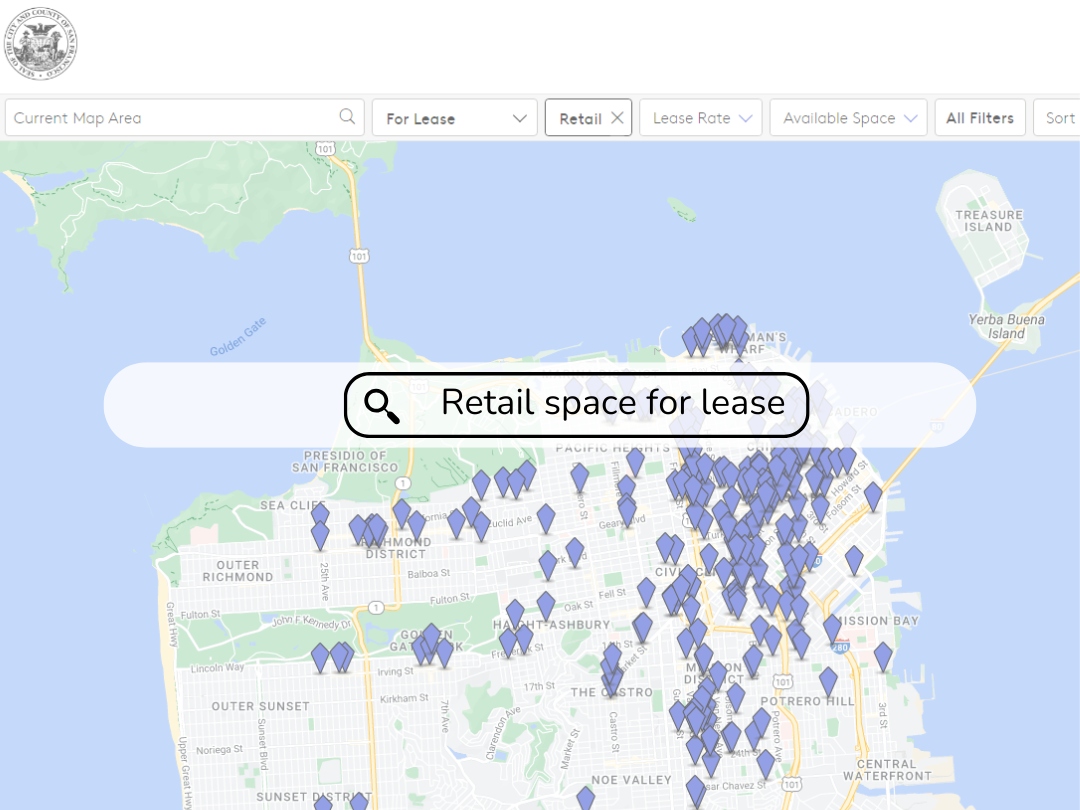AHENSYA
Opisina ng Maliit na Negosyo
Ang sentro ng impormasyon ng San Francisco para sa maliliit na negosyo.

AHENSYA

Opisina ng Maliit na Negosyo
Ang sentro ng impormasyon ng San Francisco para sa maliliit na negosyo.

Maghanap ng lokasyon para sa iyong negosyo
I-filter para sa mga komersyal na espasyo ayon sa uri, laki, lokasyon, rate, at higit pa. Kumonekta sa isang Commercial Leasing Specialist sa pamamagitan ng pag-email sa sfosb@sfgov.org o pagtawag sa 415-554-6134.Maghanap ng mga puwangMga serbisyo
Mga bagong negosyo
Mga kasalukuyang negosyo

Humingi ng tulong sa mga permit para sa iyong maliit na negosyo
Bisitahin kami sa Permit Center (49 South Van Ness) para sa tulong sa mga permit.Alamin ang higit paMga mapagkukunan
Nagsisimula
Mga panuntunan para sa negosyo
Palakihin ang iyong negosyo
Mga mapagkukunan para sa mga hamon sa negosyo
I-secure ang legacy ng iyong negosyo
Tungkol sa
Ang Opisina ng Maliit na Negosyo ay ang sentrong punto ng impormasyon ng Lungsod para sa maliliit na negosyo na matatagpuan sa Lungsod at County ng San Francisco.
Ang aming misyon ay pantay na suportahan, pangalagaan at protektahan ang mga maliliit na negosyo sa San Francisco. Nagbibigay kami ng mataas na kalidad ng mga direktang serbisyo at programa, humimok ng mga praktikal na solusyon sa patakaran, at nagsisilbing kampeon para sa magkakaibang komunidad ng maliliit na negosyo ng San Francisco.
Matuto pa tungkol sa aminMag-subscribe sa aming newsletter
Mag-sign upAng aming koponan





Impormasyon sa pakikipag-ugnayan
Address
1 Dr Carlton B. Goodlett Place
Room 140
San Francisco, CA 94102






